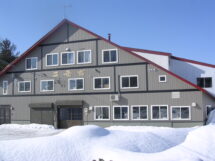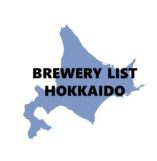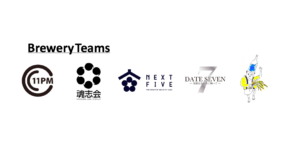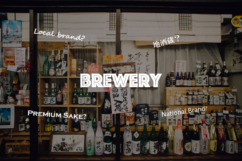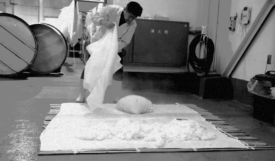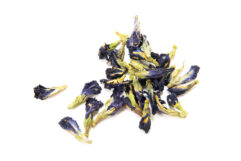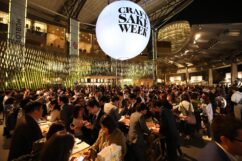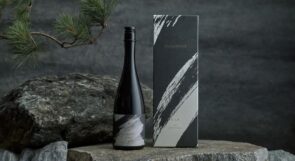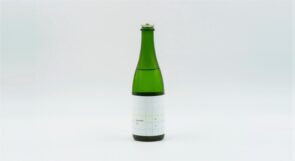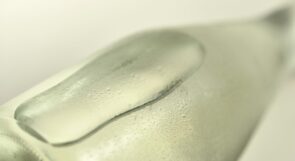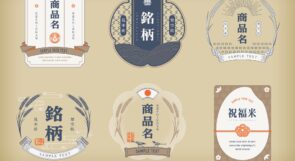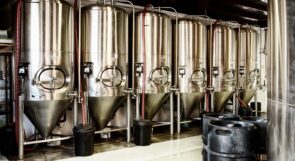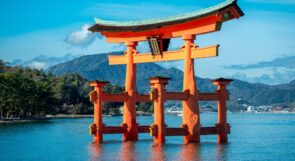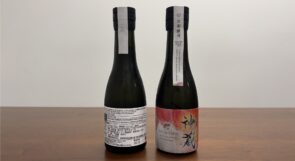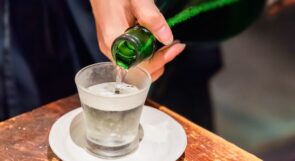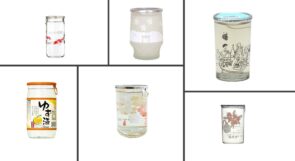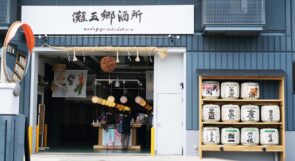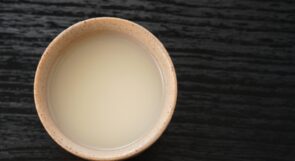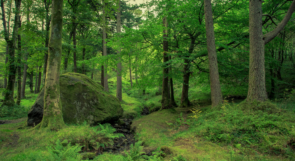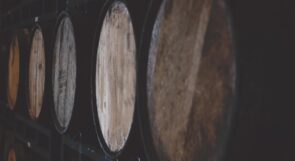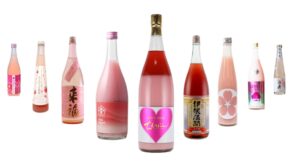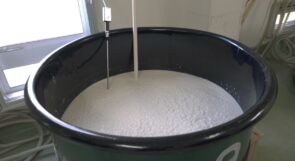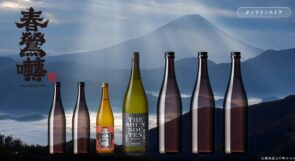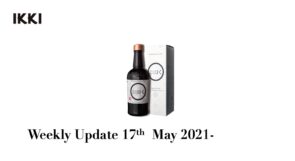“”search results:719 objects
The brewery process of Japanese Sake is changing the style as the time goes by. Toji was a seasonal worker and people such as farmers, who do not have things to work in the winter season, visit breweries every year to brew Sake. These days, the situation has changed. Less and less people are available […]
Japanese Sake is mainly brewed in Japan, and according to G.I. Japan(please refer to the article of G.I.) those brewed in Japan can name Nihonshu 日本酒(Japanese Sake). Nevertheless, as Japanese Sake spread to the world there are breweries which brewed oversea. This time, ikki deliver the brewery information about the brewery which brew oversea, and […]
As you are in Sake industry regardless of your location, you must meet vast number of breweries and brands. Sometimes, you find it as well-known brewery and sometimes you find it as very local hidden brewery. In your business, it is important to convey the information and impression about the breweries for consumers. Otherwise, it […]
Can you imagine how Sake breweries are working throughout a year? Same as wine, the production of Sake is depending on the harvest of rice and mostly it is once a year. On this page, you can find how breweries are working and producing throughout the year. Let’s start from July which is a beginning […]
New item ‘beeno buono’ was co-developed with Fattoria Al FIORE, a winery situated in Miyagi Prefecture and came on sale on 9 January 2024. This new product is an alcoholic beverage produced by adding herbs to the wine for a co-fermentation. haccoba ‘haccoba -Craft Sake Brewery-‘ was founded by haccoba Ltd., (located in Minami […]
JAPAN CRAFT SAKE COMPANY, represented by Hidetoshi Nakata(Former Japan national soccer player)held the Japanese food culture festival “CRAFT SAKE WEEK 2024 at ROPPONGI HILLS” for 12 days from April 18 (Thu) to 29 (Mon), 2024, at the Roppongi Hills Arena (Roppongi, Minato-ku, Tokyo). This year’s event will be the longest ever, lasting for 12 days, […]
TAKANOME Hi-ire is launched from TAKANOME, a Sake brand operated by Forbul Inc. (HQ: Chiyoda-ku Tokyo, Representative: Seiya Hirano) on 21 October 2023 through LINE official accounts and the company’s email subscribers. Public sales start on 23 October on its official EC website. TAKANOME, a luxurious Sake brand launched in 2019, […]
haccoba Ltd., (Minamiso-ma of Fukushima Prefecture, President: Taryo Sato) was founded in February 2021 to operate haccoba -Craft Sake Brewery-. In April 2023, it proudly releases new series called ‘Mizu-wo-amu -Nemoto Organic Farm’. Mizu-wo-amu literally means knitting water. Unlike haccoba’s normal Sake production, this local series, also roughly called as ‘Tambo’ (=rice fields) aims […]
Have you seen the same brands of Sake have some varieties such as Ara-bashiri, Naka-dori and Seme? These terms are used to specify the timings of pressing during the Sake production. How are they different? Let us explore Arabashiri, Nakadori and Seme. Joso (上槽) To understand the differences in Arabashiri, Nakadori and Seme, […]
As you are familiar with the concept, companies can choose not to produce their own products using their sites but to make an order to produce items under their brands through OEM. Thus it becomes possible for the companies to use resources for sales and other activities rather than the product development, which […]
Inter holdings Inc. ( HQ: Shibuya-ku, Tokyo, Representative/CEO: Ikumi Narui, https://www.inter-hs.com/) starts its experimental study with 5 participating breweries on 10 November 2023 to promote green transformation through vacuum Sake. Inter Holdings Inc. provides solutions to supply chains through patented vacuum technologies enabling as high as 99.5% vacuum. Overview The company perform […]
There are there representative Sake making regions in Japan. They are Nada (灘) of Hyogo prefecture (兵庫県), Fushimi (伏見) of Kyoto prefecture (京都府), and Saijo (西城) of Hiroshima prefecture (広島県). This article focuses on Fushimi of Kyoto prefecture exploring its geographical advantages and history. Fushimi and its surroundings Fushimi is blessed […]
Have you tasted Japanese wine? More simply, are you familiar with the fact that Japan produces wine? Its recognition and the volume of distribution is still low, so not many are yet aware of the existence of Japanese wines. Now let us check out the Japanese wine, produced in Japan, using the Japan-grown […]
Through an update of the Japanese Liquor Tax Law in 1994, the minimum annual production lot for beers was lowered. The change was followed by so-called, a ‘craft beer boom’, and it became an important turning point for micro-breweries to become popular. Do you know that there are more and more micro-breweries that produce […]
Recommendations of Sake may require some knowledge. There are a variety of Sake available in markets, so you might be concerned about what Sake to propose when you are asked for a recommendation. Recommendations of Sake needs to be customized according to the seasons as well as each individual preference, therefore they are not […]
Among a number of Sake production areas in Japan, there are three most important Sake production areas in Japan. The areas are called ‘Three largest production areas’ (Sandai Sakedokoro,三大酒処) with respect. Are you familiar with them yet? They are Nada (灘) in Hyogo (兵庫), Fushimi (伏見) in Kyoto (京都), and Saijo (西条) […]
Labels on Sake bottles contain much information on its identity. The labels surely include information required by law, but they are also used to deliver messages from the producers to consumers. Capturing messages from the labels will help you select a Sake bottle of your interest. Let us probe labels of Sake bottles! […]
According to the publications by Japan Sake & Shochu Makers Association, the export of Sake reached 40.1 billion yen in 2021, which recorded a continual growth of the last 12 years. There is no doubt that Sake has been gaining attention overseas. With its popularity, it is natural to assume that the volume […]
Have you tasted Genshu (原酒) meaning base / origin of Sake? Genshu is freshly made by filtering Moromi, fermented composition of rice, water and koji. For Genshu, the flavour nor level of alcohol is adjusted. Thus Genshu tends to carry a rich taste of rice and umami resulting in giving a powerful punch […]
Have you seen sake in a small glass of 180ml? We call it “Cup-Sake, Sake in a cup of glass”. Cup-Sake was developed to reach a wide number of population with its convenient format. The style of Cup-Sake is familiar these days, however, the current format has been reached by numerous efforts for improvements. […]
Nadagogo, Nada five villages (灘五郷) is one of the important keywords to understand the world of Sake. Nadagogo stands for a collection of 5 different villages : Nishigo(西郷), Mikagego (御影郷), Uozakigo(魚崎郷), Nishinomiyago(西宮郷), and Imazugo(今津郷) in Kobe City and Nishinomiya City of Hyogo Prefecture. The area is widely known as a production site for Nada-Sake. Sake […]
There is an alcoholic beverage called “Doburoku”. It has a porridge-like texture in a white colour. The ingredients are equivalent to those of Sake, namely rice, koji and water. Precisely speaking Doburoku cannot be categorised under a genre of Sake, but considered as ‘other fermented alcohol’ (その他醸造酒) according to Japanese taxation regulations. This article analyses […]
The classification is made according to the ingredients and production methods, that leads to 8 types of Tokutei-meishoshu (特定名称酒), Specially Designated Sake. I focus on Ginjo Sake in this article. How to produce Ginjo-style Sake? Ginjo-Sake is made in Ginjo-style. What does it mean by “Ginjo”? Characters for Ginjo(吟醸) means carefully selected ”吟” plus […]
Concept of SDGS, initially promoted by the UN is prevailing across the world, and there is no doubt that you are familiar with the word these days. The topics of SDGs are discussed at school on a daily basis, since it became one of the essential themes of our modern way of life. Have […]
The concept of maturation / long-aging cannot be separated from alcohol as more people are attracted to the word and concept these days. You probably have an impression that aged wines and whiskeys tastes better in general. Have you heard of long-aged Sake by any chance? There is a type of Sake whose taste […]
Majority of people should have at least one experience of feeling sick after drinking too much. Yes, that’s hangover. Alcohol tolerance varies from person to person, or his/her health conditions of the day, and hangover can comes to you both expectedly and unexpectedly. In this article, I discuss some tips to possibly “manage” hangover […]
Have you seen Sake in red colour? For the first time you see it, you must be curious how it appears red. You might have found it on social networking media and thought “there is no such thing like red Sake. It can be fake, or photoshopped”, or you might have wondered if had […]
Most Sake is found in a form of clear transparent liquid even with slight colours of golden, yellowish, or greenish look. If you have not seen Nigori-zake meaning cloudy Sake, you may deny it is fallen into the Sake category. This article will focus on Nigori-zake. There exist core Sake fans who like Nigori-zake. […]
We seldom find the best before date on Sake bottles. Instead, they frequently provide the date of production. Why? Without a specified best before date, does it mean the flavour of Sake last forever…? Best before date does not exist for Sake…? Let us examine what ‘date of production’ means to Sake. No Best […]
One of the most important process in Sake making is Shubo making. There are a multiple types of Shubo depending on how it is made, and differences in Shubo result in a variety of tastes and aroma of Sake. Now I will bring some ideas how Shubo works. What exactly is Shubo? Shubo, […]
On 1st September, Yorozuya Jozoten, Sake brewery in Fujikawa cho Yamanashi prefecture, officially announce the release of new products and rebranding of their signature brand [SHUNNOTEN 春鶯囀]. Aim of rebranding SHUNNOTEN So far, the labels of Shunnoten were designed in various patterns according to the concept and historical story behind to deliver our thoughts […]
Since April, the new calendar year in Japan, there were 3 New area appointed as G.I. which are Yamanashi, Saga, Nagano. All the new G.I. this time is in the extent of a prefecture. This time, ikki deliver information about 3 new G.I., and why they are appointed and which Sake are appointed. G.I. […]
Japanese Sake is often compared with Wine to understand especially for the beginners. As many of you know, Japanese Sake is a fermented alcohol; same as beer and wine. When people start to understand about Japanese Sake a lot of people compare Sake with Wine as both are same fermented alcohol and relatively similar […]
On 17th May 2021, there was an announcement of award winning Sake from 1499 brands in a blind tasting format. In this competition, there are 9 Categories which are “Futsu-shu”, “Junmai”, “Junmai Ginjo”, “Junmai Daiginjo”, “Honjozo”, “Ginjo”, “Daiginjo”, “Spakling” and “Koshu”. As a result, there are 25 brands awarded the trophy and in […]
On 8th April 2021, there was Fine Sake Award selection in Tokyo, and there were 1,000 entries from 261 breweries. In this competition there was 5 categories which are “The Fine Sake Award Japan”(main category), “Sparkling Sake category”, “Premium Daiginjo category”, “Premium Junmai category” and “Premium Sparkling Sake category”. Description of each categories are […]
In this ikki weekly news, ikki deliver what is happening in Japan in Sake industry for your knowledge as well as hints for your business. Please note that if you would like to see photos or full contents, kindly visit the original site from the link below the news topic and use google translate to […]






